Scottish Shellfish Farm Production Survey 2023
This report is based on the returns of an annual survey questionnaire sent to all active authorised shellfish farming businesses in Scotland. Statistics on employment, production and value of shellfish from Scottish shellfish farms are presented.
Businesses and sites
The numbers of authorised and active shellfish farming businesses in 2023 was 103. This value has steadily declined in the last ten years from a value of 144 in 2014, dropping 28% over the decade. There are many sites that held stock not yet ready for market, others were fallow, and some were located in remote areas where cost-effective production and marketing of shellfish proved difficult. In 2023, 169 sites produced shellfish for sale, an increase of 1% from 2022 (167), with 59% of these sites located in Shetland.
Data Source: Scottish Shellfish Farm Production Survey 2023, Supplementary Tables, Table 3.
Chart 5 Active and producing farm sites by region 2023.
The dark blue bars show the number of active sites and the turquoise bars show the producing sites.
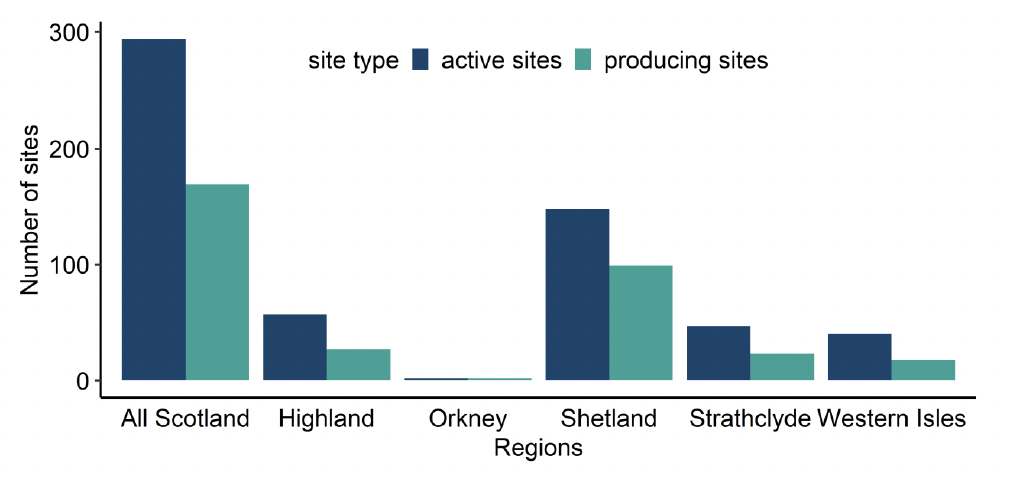
Active = Farms in a production growing cycle which may contain stock or be fallow.
Producing = Placing on the market for the table and/or on-growing.
NB: A business may produce more than one species and in more than one region.
Data Source: Scottish Shellfish Farm Production Survey 2023, Supplementary Tables, Table 4.
Figure 1 Regional distribution of active and producing shellfish sites in 2023.
The number of active sites shown by each region with the number producing given in brackets. The proportion of business producing each species in each region are shown in the pie charts beside the map.
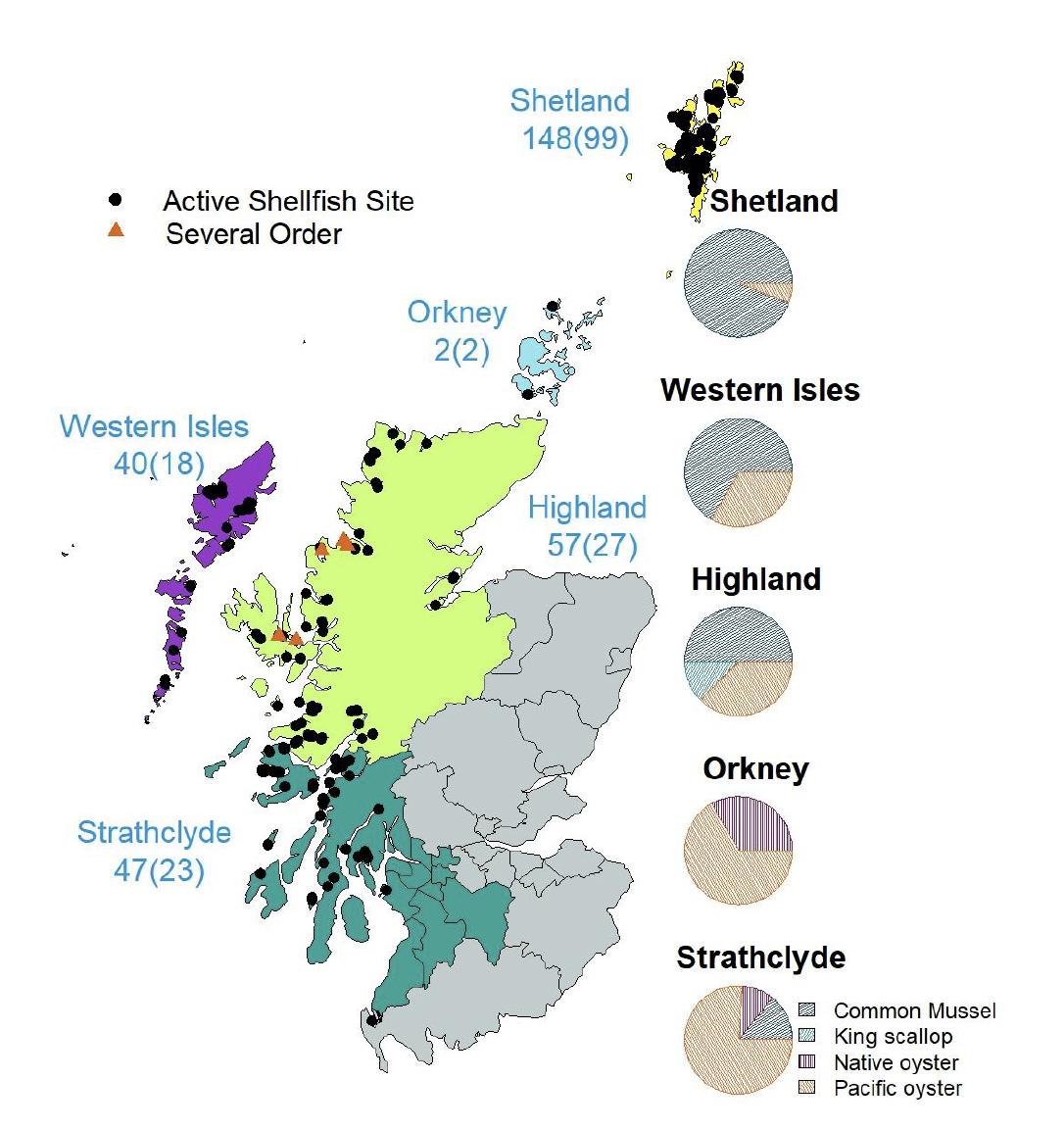
There were five Several Orders in place for scallop fisheries in 2023 (see figure 1) all of which are located in the Highland region.
Charts 6 shows number of businesses by region and by species with table production, chart 7 shows those with on-growing production and chart 8 those with no production. Many businesses cultivate more than one species on site, a practice made possible by similar cultivation techniques. For example, Pacific oyster can be grown with native oyster, and mussel with Pacific oyster. The highest proportion of Pacific oyster businesses are located in Strathclyde while the highest proportion of mussel businesses are in Shetland.
Chart 6 Number of businesses by region and by species - production for table in 2023.
Regions surveyed were Highland, Orkney, Shetland, Strathclyde and Western Isles and species shown are common mussel, king scallop, native oyster and Pacific oyster.

Chart 7 Number of businesses by region and by species - for on growing to other producers.
Regions surveyed were Highland, Orkney, Shetland, Strathclyde and Western Isles and species shown are common mussel, king scallop, native oyster and Pacific oyster. There was no production for on-growing in Orkney.

Chart 8 Number of businesses with no production by region and by species.
Regions surveyed were Highland, Orkney, Shetland, Strathclyde and Western Isles and species shown are common mussel, king scallop, native oyster and Pacific oyster. There were no businesses with no production in Orkney.
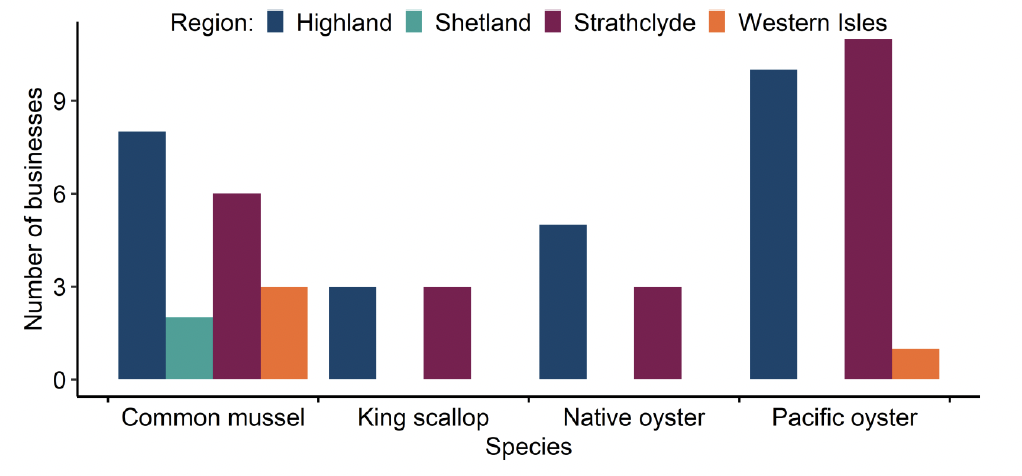
Chart 9 Business production levels for common mussel 2023.
Numbers of businesses categorised by production levels, with production ranging from 0-10 tonnes to over 300 tonnes.
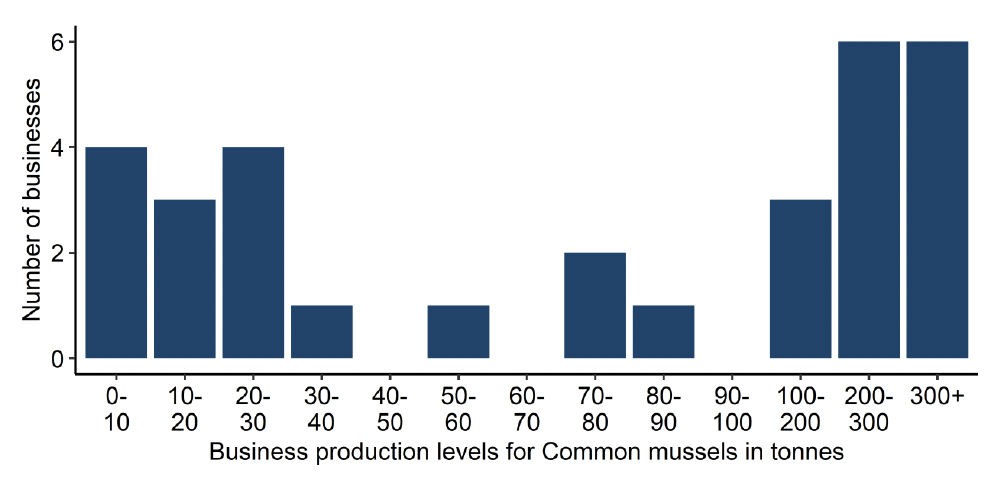
Chart 10 Business production levels for Pacific oyster 2023.
Number of businesses categorised by production levels, with production ranging from 0-10,000 shells to over 300,000 shells.
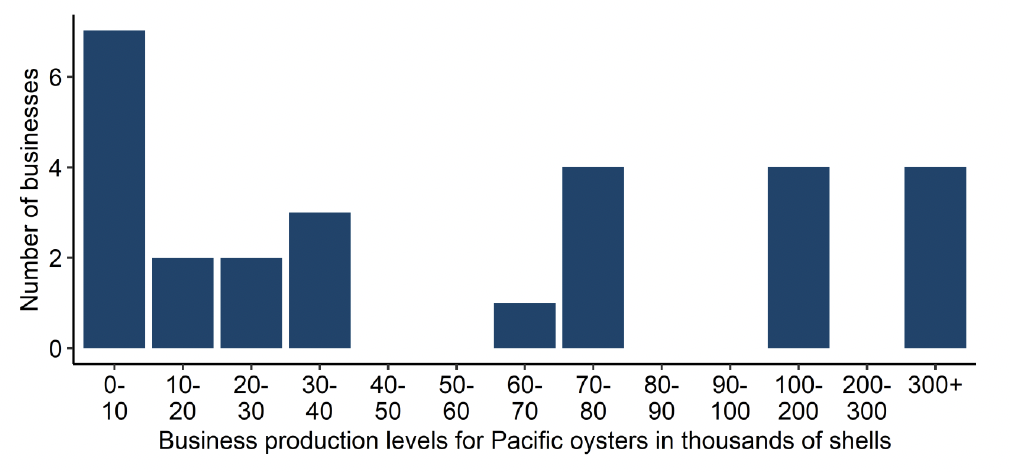
For king scallop, one business produced 0-10,000 shells and one produced 10-20,000 shells. For native oyster, one business produced 0-10,000 shells, one produced 10-20,000 shells and one produced 80-90,000 shells.
There were 12 businesses producing more than 200 tonnes of common mussel, this was the same as from 2022. These 12 businesses produced 92% (9,444 tonnes) of the total common mussel production in Scotland. There were four businesses that produced more than 300,000 Pacific oysters. The production from these businesses accounted for 69% (2,706,000 shells) of the Scottish Pacific oyster total.
Contact
Email: MD.Productionsurvey@gov.scot
There is a problem
Thanks for your feedback